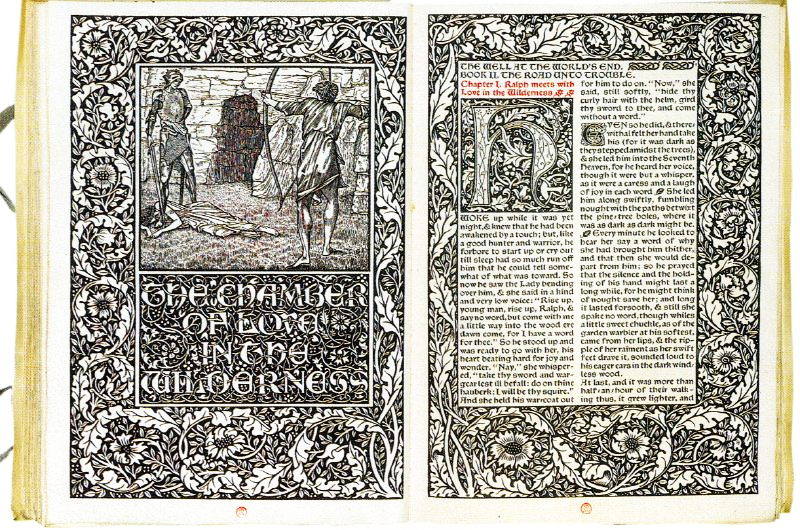Illustrator: Arthur Gaskin (British, 1862–1928)
Author: William Morris (British, 1834-1896)
Illustrations for The Well at the World’s End, ca. 1892–1895
Mark Samuels Lasner Collection, Special Collections
pencil and ink drawings on paper
Illustrator: Arthur Gaskin (British, 1862–1928)
Author: William Morris (British, 1834-1896)
Trial page for The Well at the World’s End
Hammersmith: Kelmscott Press, 1893–1894.
Mark Samuels Lasner Collection, Special Collections
wood engraving on paper
Illustrator: Edward Burne-Jones (British, 1833-1898)
Author: William Morris (British, 1834-1896)
Frontispiece for The Wood Beyond the World, 1894
Mark Samuels Lasner Collection, Special Collections
photographs: platinotypes with added pencil, ink, and gouache on paper
Although the aesthetic of the books from William Morris’s Kelmscott Press harkens back to the early printers of the fifteen century, the illustrations by Burne-Jones were produced with the help of the latest technology—photography. The complex and time-consuming process began with the artist’s finished pencil drawings, which were photographed. A second artist, Robert Catterson-Smith, covered the photographic prints with a thin layer of translucent Chinese white and went over the visible lines in ink, reworking the design until Burne-Jones was satisfied with the result. The approved drawing was then transferred to a woodblock for engraving by a third participant, William Harcourt Hooper. These images show the frontispiece to The Wood Beyond the World in the making: the first has pencil additions by Catterson-Smith, the mount with details of hands and a foot, the reverse including ink and gouache sketch showing the grass as present in the published version; the second, from a later state, has added pencil background; and the third shows the completed design, the background in pencil and gouache in the hand of Edward Burne- Jones.
Author: William Morris (British, 1834-1896)
lllustrator: Edward Burne-Jones (British, 1833-1898)
The Wood Beyond the World
Hammersmith: Kelmscott Press, 1984.
Author’s presentation copy, inscribed “to Amy Carruthers from William Morris October 21st 1894.”
Mark Samuels Lasner Collection, Special Collections
wood engravings
In writing The Wood Beyond the World Morris drew his inspiration from medieval tales of chivalry and romance. However, the work is also considered a prototype of the modern fantasy novel. It tells the story of a young man who leaves his homeland and has many adventures, including rescuing a maiden from an enchanted castle. The frontispiece is a woodcut that was produced based on a drawing by Morris’s longtime friend and collaborator, the Pre-Raphaelite painter Edward Burne-Jones.
Illustrator: Laurence Housman (British, 1865 - 1959)
Author: Christina Rossetti (British, 1830-1894)
Goblins, ca. 1893.
Mark Samuels Lasner Collection, Special Collections
ink drawings on paper
Illustrator: Laurence Housman (British, 1865 - 1959)
Author: Christina Rossetti (British, 1830-1894)
[Two Illustrations for Goblin Market], ca. 1893
Mark Samuels Lasner Collection, Special Collections
ink drawings on paper
Author: Christina Rossetti (British, 1830 - 1894)
Illustrator: Laurence Housman (British, 1865 - 1959)
[Two illustrations for Goblin Market]
hand-colored wood engravings on paper
Author: Christina Rossetti (British, 1830 - 1894)
Illustrator: Laurence Housman (British, 1865 - 1959)
Goblin Market
London: Macmillan and co., 1893.
Mark Samuels Lasner Collection, Special Collections
While the first edition of Goblin Market was illustrated with the iconic frontispiece and title page by the author’s brother, this later version employed another well-known late nineteenth-century British artist, Laurence Housman to create new visual interpretations of the poem. Housman’s woodcut illustrations are filled densely with elegant, swirling arabesque lines and enigmatic figures.
For this special copy the Guild of Women Bookbinders produced a goatskin binding with gold detailing. Further, Housman’s illustrations and decorative elements were hand-colored, purportedly by “Miss Gloria Cardew.” Recent investigation suggests that Cardew was not a real person, and that the coloring work for such a large project was likely done by a team of people. The artist’s sister, Clemence Housman cut the engravings into the woodblocks.
Christina Rossetti (British, 1830 - 1894)
Autograph letter from Christina Rossetti to George Lillie Craik, March 22, 1893.
Mark Samuels Lasner Collection, Special Collections
This letter from author Christina Rossetti to George Lillie Craik, the head of her publishing company, Macmillan, presents an example of disconnect and disharmony between a writer and an illustrator. Here Rossetti explains that she dislikes Laurence Housman’s illustrations for Goblin Market and prefers the work of her brother Dante Gabriel Rossetti. Ultimately Housman removed masks from the faces of figures in his illustrations to which Christina Rossetti had objected. Publication of the edition with Housman’s illustrations proceeded after this change.
Author: Christina Rossetti (British, 1830 - 1894)
Illustrator: Dante Gabriel Rossetti (British, 1828 - 1882)
Goblin Market and Other Poems: With two designs by D. G. Rossetti
[Frontispiece and title page]
First edition. Cambridge and London: Macmillan and co., 1862.
Mark Samuels Lasner Collection, Special Collections
wood engraving on paper
Author: William Morris (British, 1834-1896)
lllustrator: Edward Burne-Jones (British, 1833-1898)
Frontispiece
wood engraving on paper
William Morris (British, 1834-1896)
Design for a border for The Well at the Word’s End,
ca. 1892-1893
Mark Samuels Lasner Collection, Special Collections
Ink and pencil drawing with Chinese white on paper
Author: William Morris (British, 1834-1896)
Illustrator: Edward Burne-Jones (British, 1833-1898)
The Well at the World’s End Hammersmith: Klemscott Press, 1896
Mark Samuels Lasner Collection, Special Collections
Wood engraving on paper
Morris’s prose romance tells of a prince who embarks on a quest to reach the “well at the world’s end,” who’s waters grant eternal youth. Like, The Wood Beyond the World, the influence of medieval literature is evident in the book’s language and structure. Morris commissioned Arthur Gaskin to provide the illustrations but, for reasons not clear, rejected the young Birmingham artist’s work and set in favor of Burne-Jones, who provided frontispiece and four full-page woodcuts, each surrounded by a border designed by Morris. Displayed with the book and one of Morris’s borders are several of Gaskin’s drawings and a rare surviving trial page, in which the illustrations appear with a portion of text.

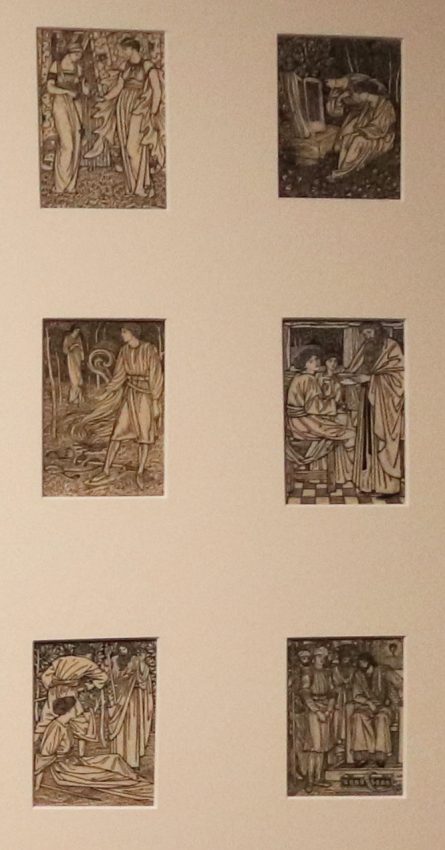
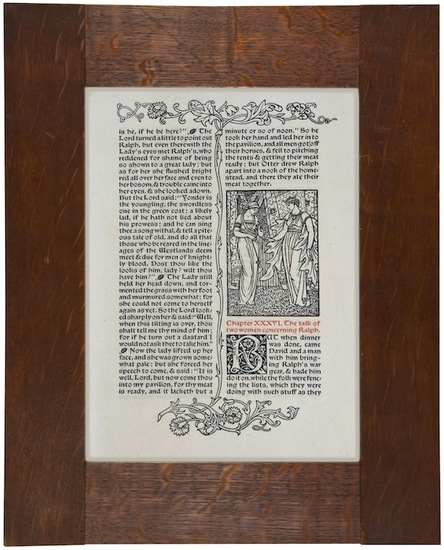
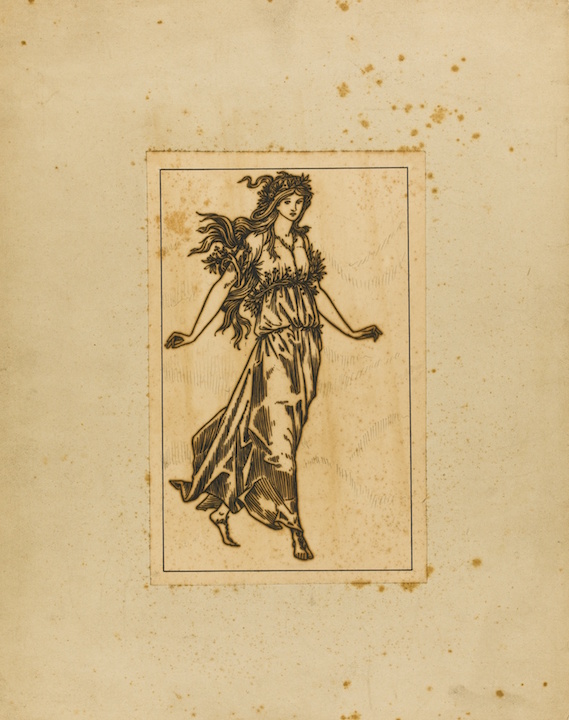
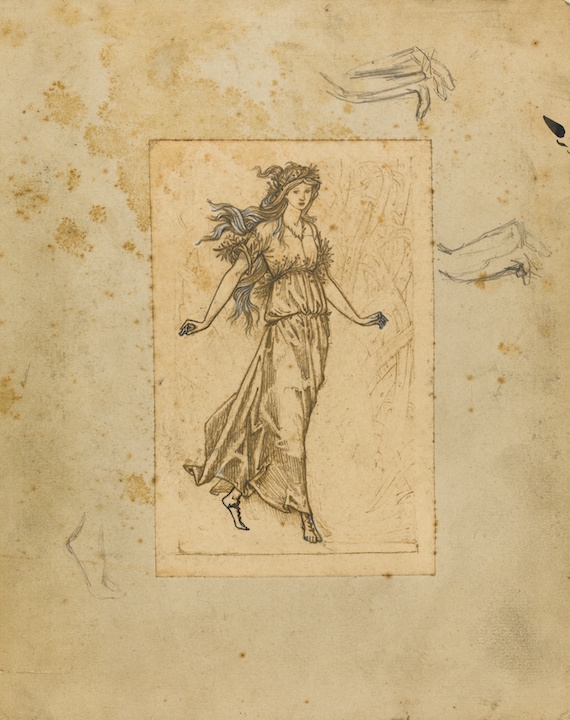
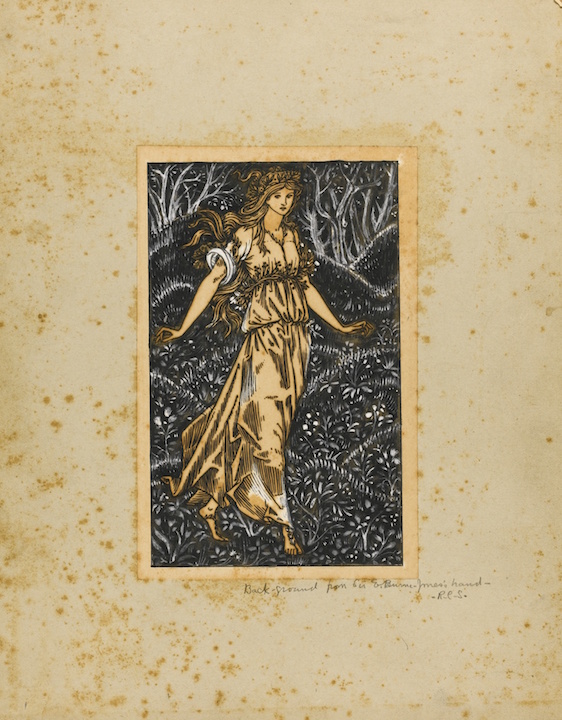
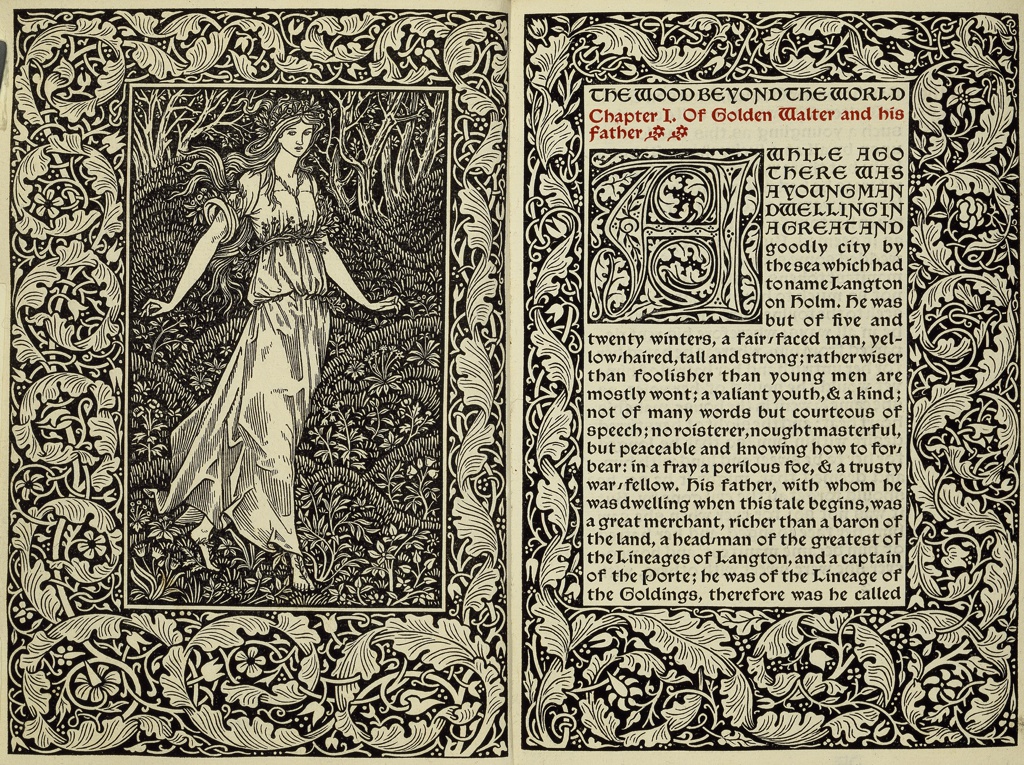
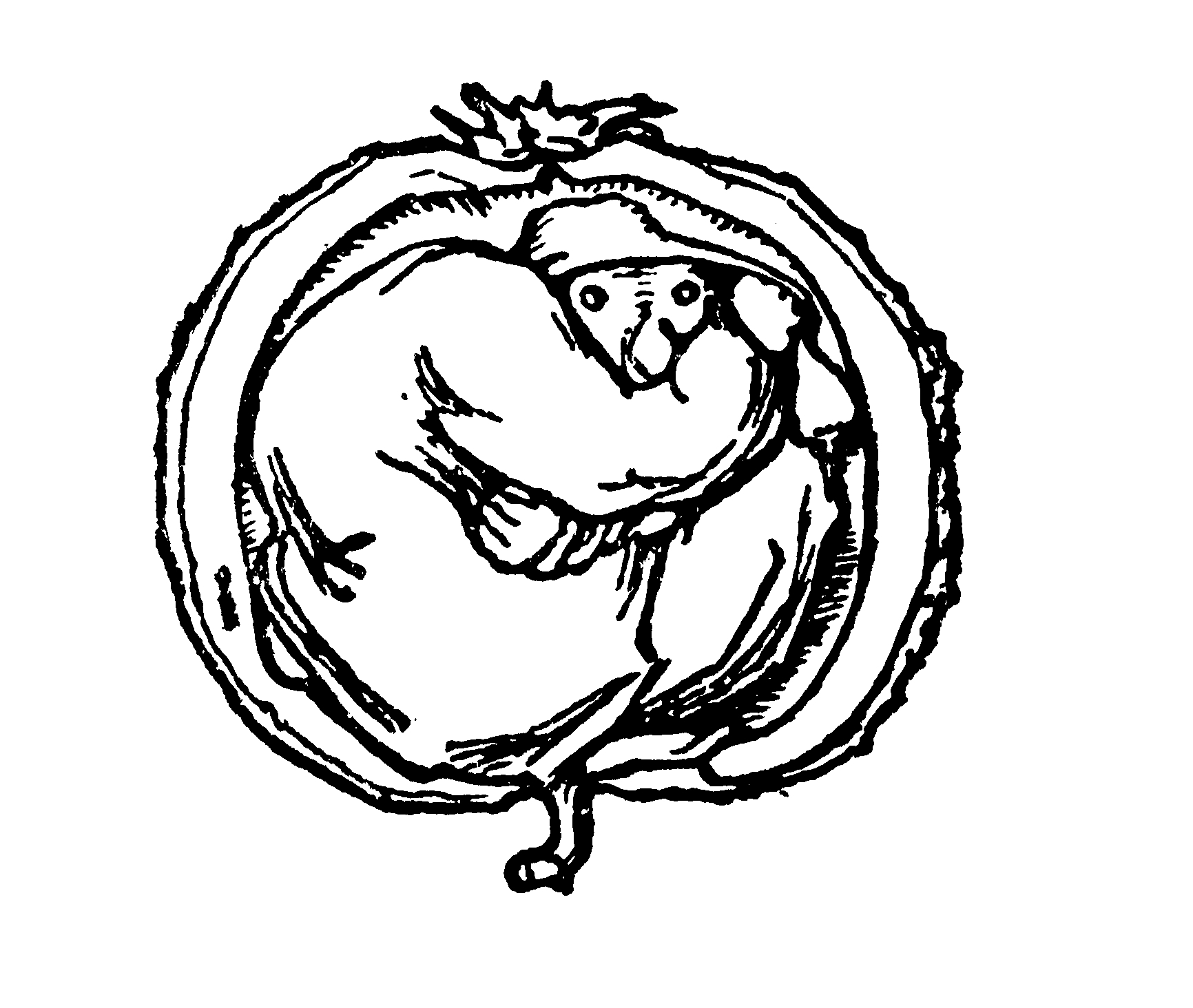
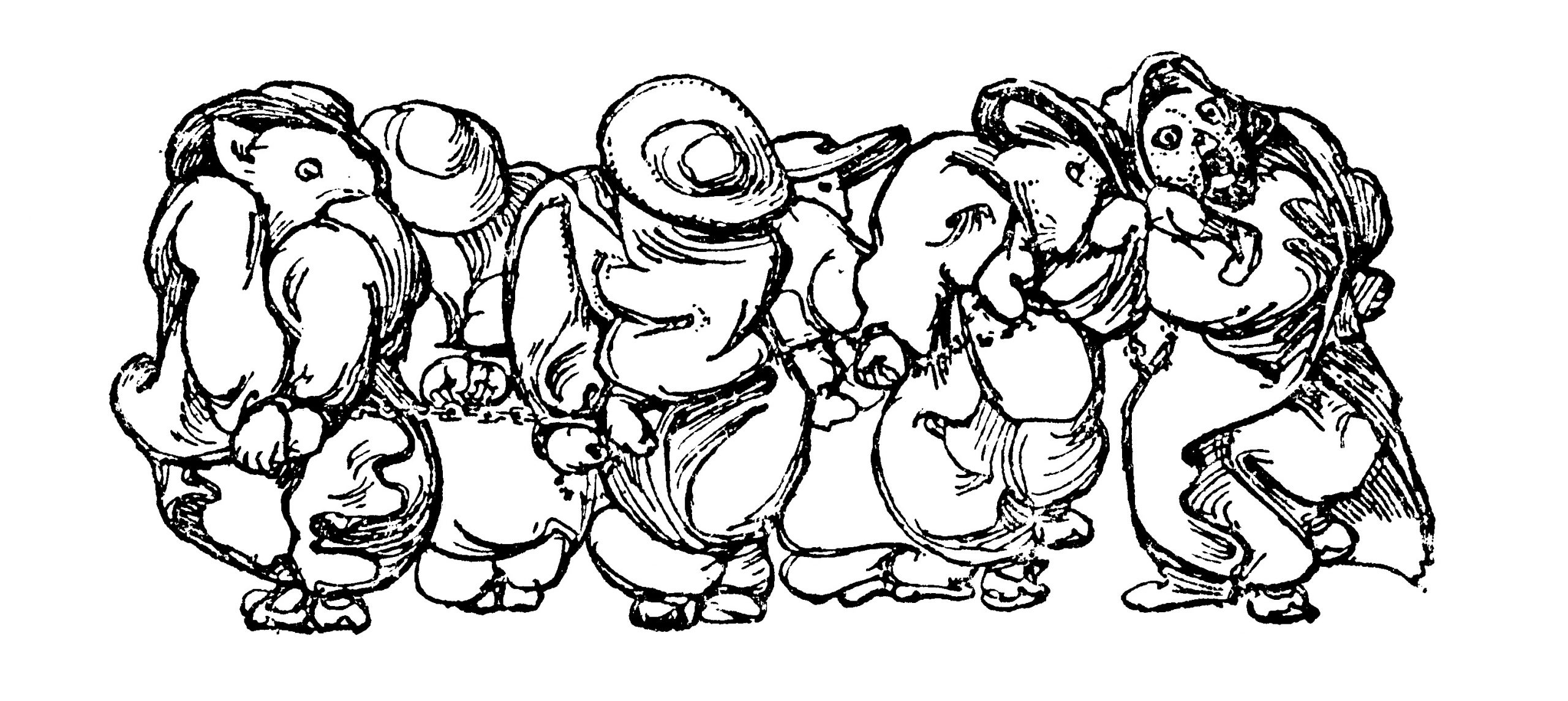
![[Two Illustrations for Goblin Market] ink on paper [Two Illustrations for Goblin Market] ink on paper](https://exhibitions.lib.udel.edu/drawing-connections/wp-content/uploads/sites/65/2020/02/Housman.IllustrationsGobln-Market.MSL4283.jpg)
![[Two illustrations for Goblin Market] hand-colored wood engravings on paper [Two illustrations for Goblin Market] hand-colored wood engravings on paper](https://exhibitions.lib.udel.edu/drawing-connections/wp-content/uploads/sites/65/2020/02/housman_both_2-scaled-e1591375744172.jpg)

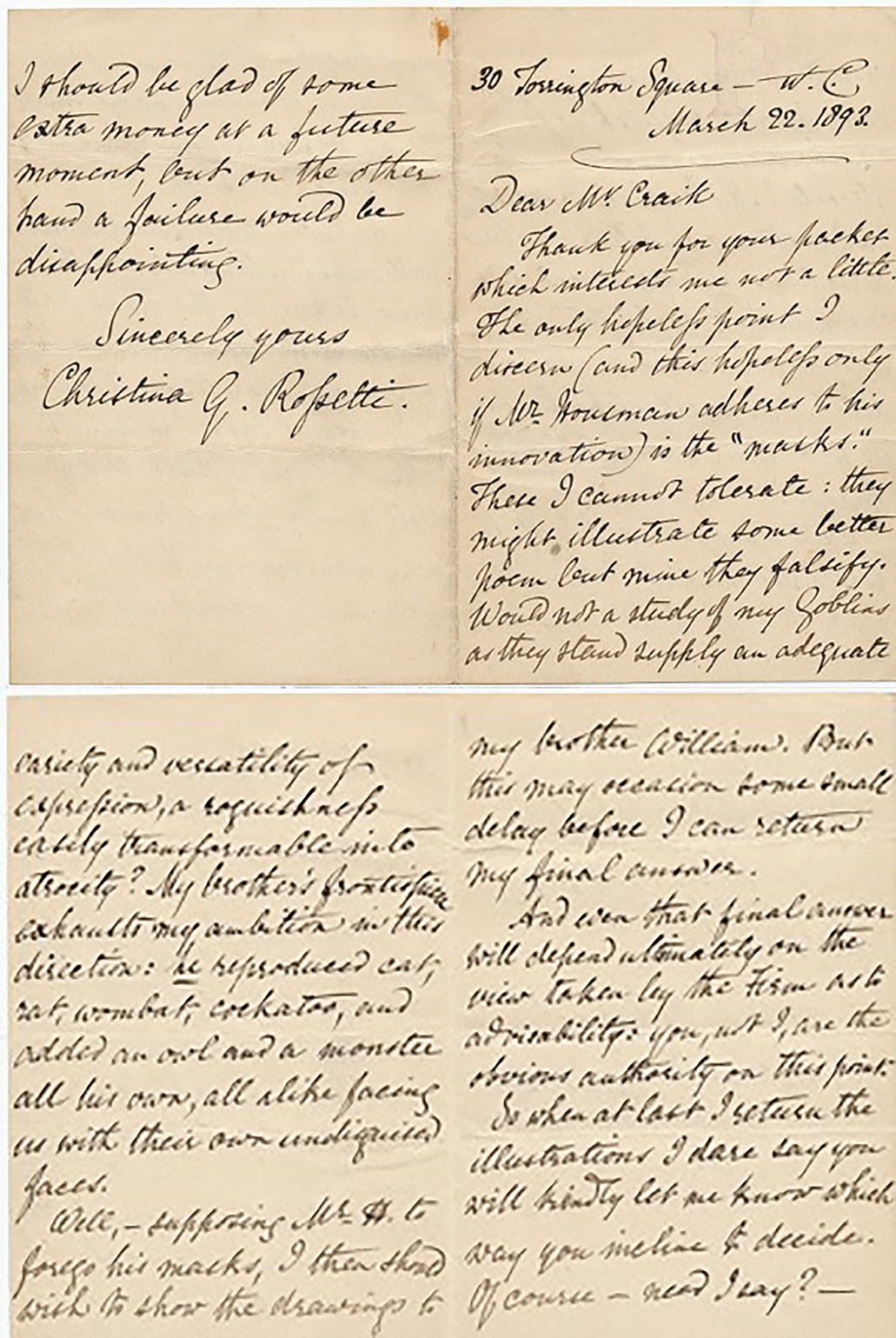
![Goblin Market and Other Poems: With two designs by D. G. Rossetti [Frontispiece and title page] Goblin Market and Other Poems: With two designs by D. G. Rossetti [Frontispiece and title page]](https://exhibitions.lib.udel.edu/drawing-connections/wp-content/uploads/sites/65/2020/02/rossetti_goblin_market_1862_2-e1582063459282.jpg)

